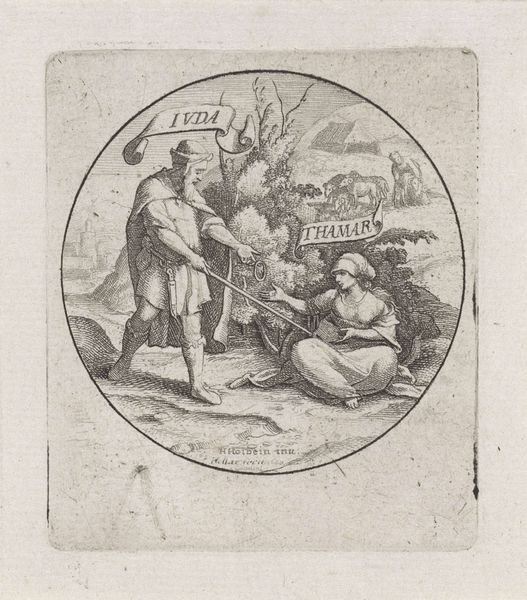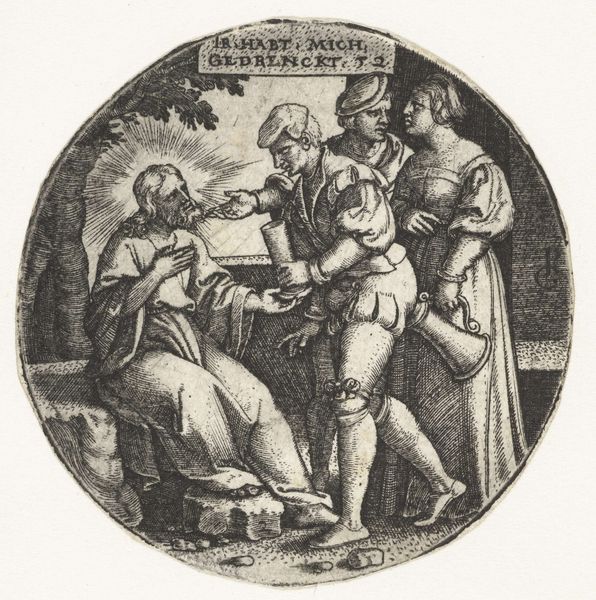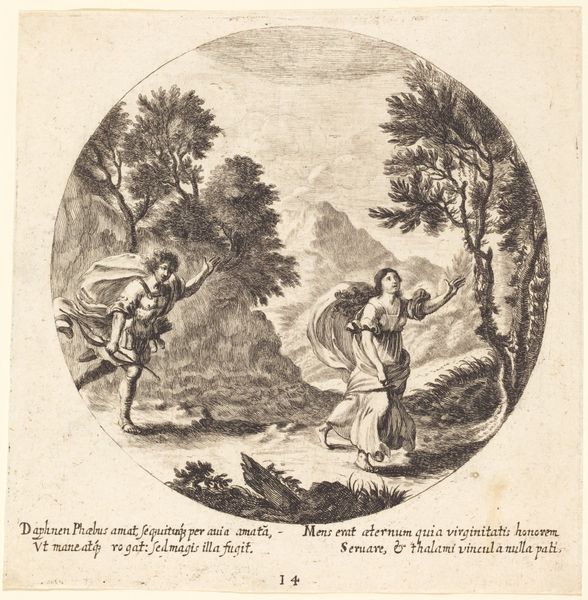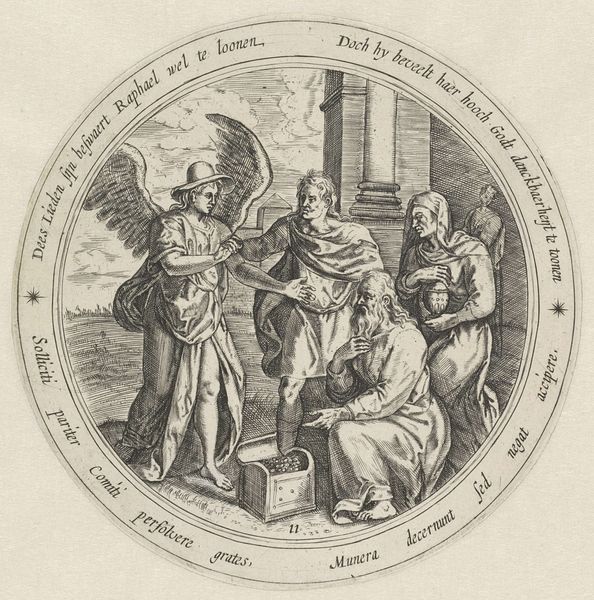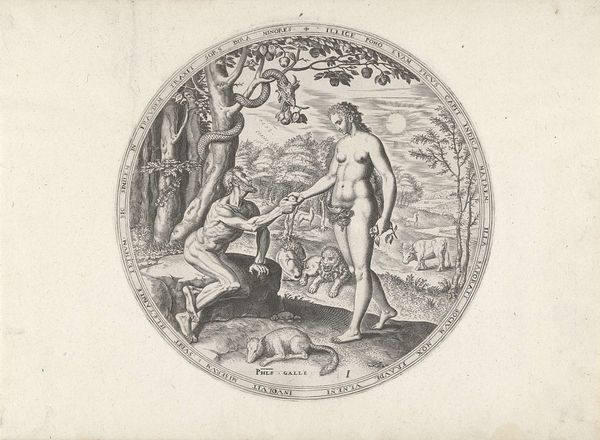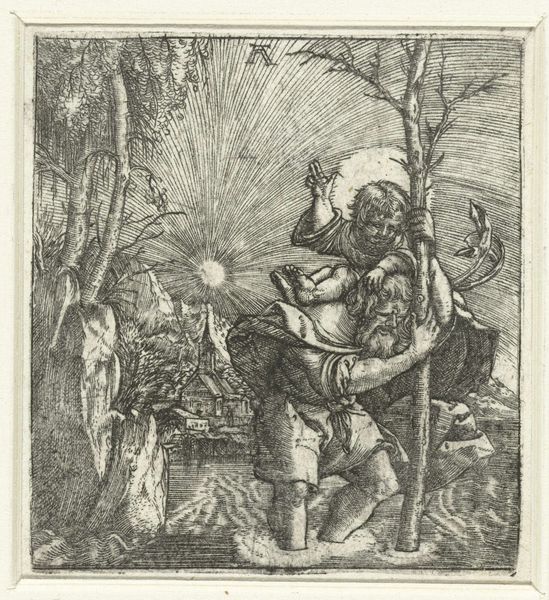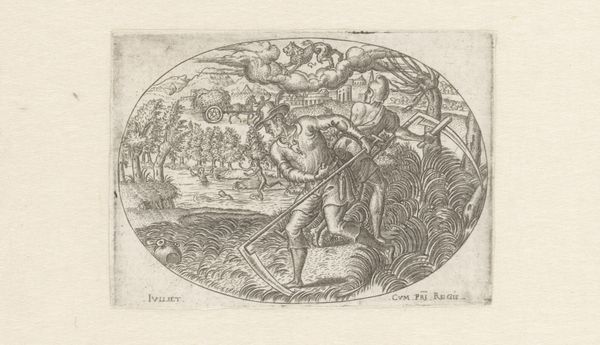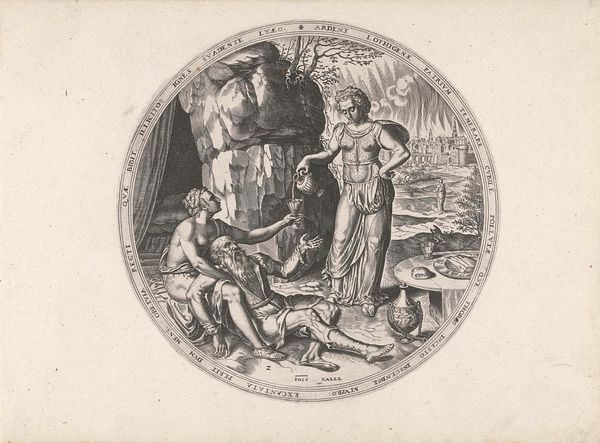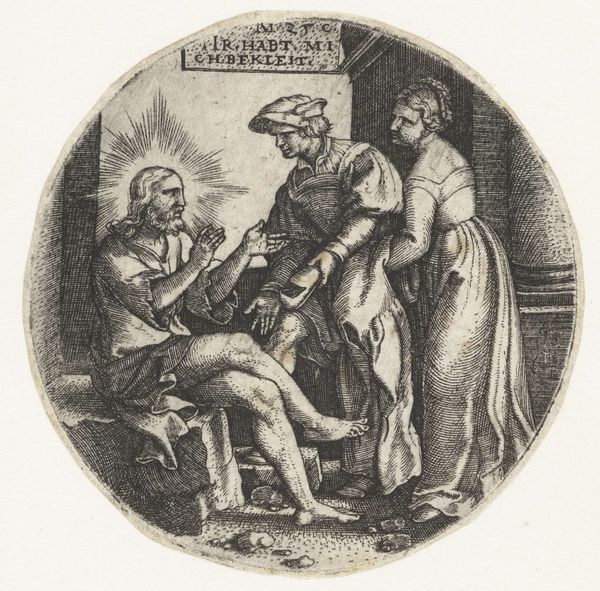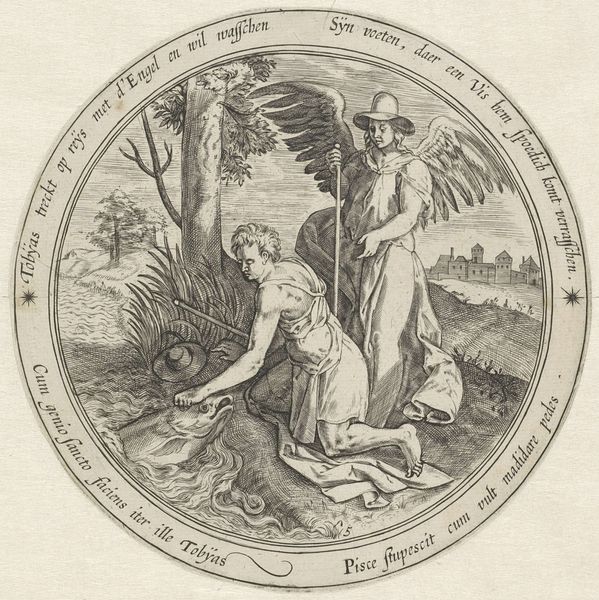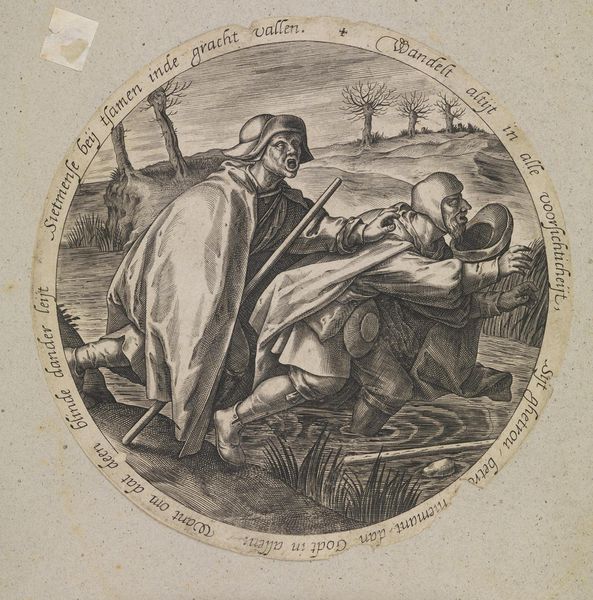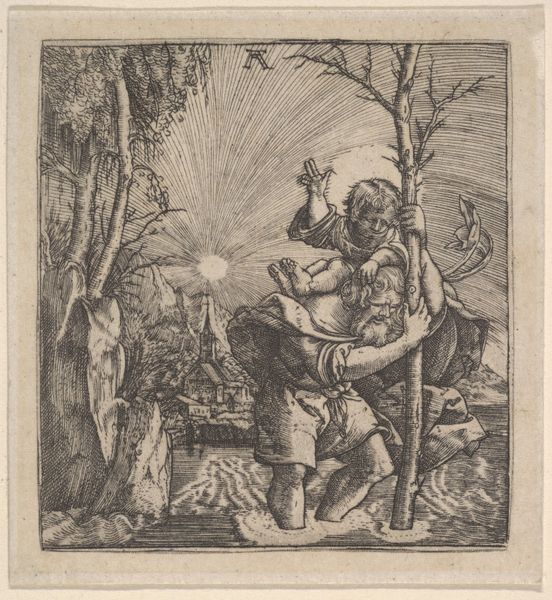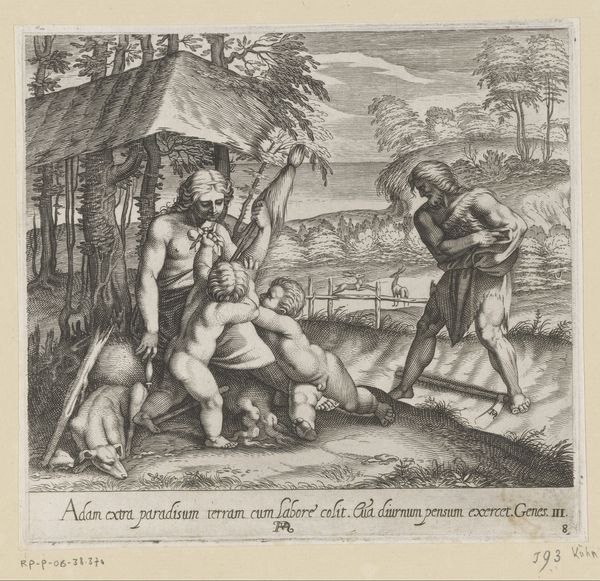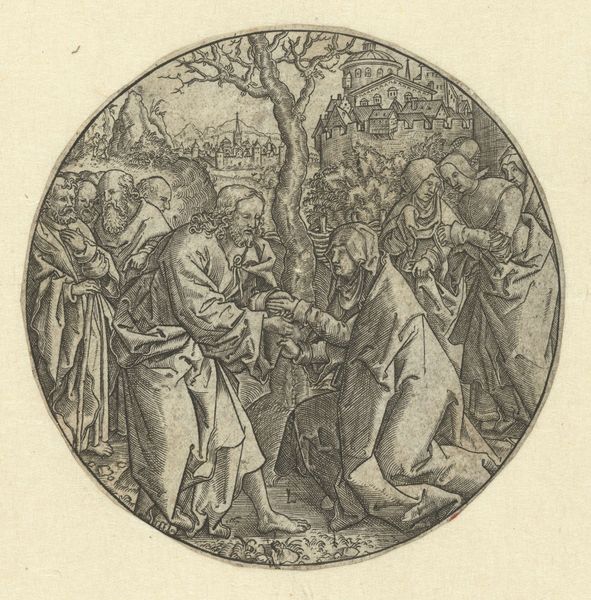
drawing, print, engraving
#
drawing
#
narrative-art
#
baroque
# print
#
figuration
#
engraving
Dimensions: Sheet: 2 3/16 × 1 15/16 in. (5.5 × 5 cm)
Copyright: Public Domain
Wenceslaus Hollar etched this tiny print of Judah and Tamar in London in 1643. It depicts the biblical story with potent symbols of identity and deceit. Judah extends his staff and ring towards Tamar. These are not mere objects; they are extensions of Judah himself, imbued with his authority and lineage. The ring, in particular, serves as a sign of recognition, a motif that echoes through time, reappearing in countless variations in the myths of many cultures. Consider its evolution from ancient seals of power to modern wedding bands, each instance carrying the weight of commitment and identity. The exchange carries an emotional charge. Tamar's posture is demure, yet her outstretched hand speaks of quiet determination. This echoes the enduring psychological tension between power and vulnerability. Note how this scene engages us on a subconscious level, tapping into our primal understanding of social dynamics, of deception and recognition. The narrative has resurfaced throughout history, evolving and adapting, but always retaining its core themes of identity, deception, and the cyclical nature of human affairs.
Comments
No comments
Be the first to comment and join the conversation on the ultimate creative platform.
